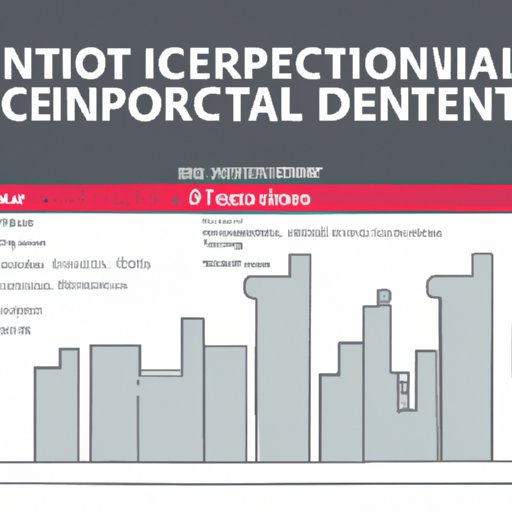Introduction
Capital investment is a term used to describe the process of investing money in assets that can generate income or increase in value over time. It is one of the most important tools for building wealth and achieving financial freedom. In this article, we will explore the basics of capital investment, as well as provide strategies for making successful investments that maximize returns.

A Guide to Capital Investment: Exploring the Basics
What is Capital Investment?
Capital investment is the purchase of assets with the expectation that they will generate income or appreciate in value over time. These assets can be stocks, bonds, real estate, commodities, or any other asset class. The goal of capital investment is to create wealth, either through the appreciation of the asset’s value or through the income generated by it.
Benefits and Risks of Capital Investment
The primary benefit of capital investment is the potential for increased wealth. When done correctly, capital investments can offer generous returns over time. According to a report by the Global Financial Literacy Excellence Center, “long-term investors have seen average returns of 7% per year over the past five decades.” However, there are also risks associated with capital investment. As with any investment, there is no guarantee of return, and there is always the possibility of losing money. It is important to understand the risks associated with each type of investment before committing funds.

Understanding the Different Types of Capital Investment
Equity Investments
Equity investments involve buying shares of stock in a company. Investors receive dividends from the company’s profits and can gain capital gains if the stock price increases. Equity investments are typically considered high-risk investments, but they also offer the potential for high returns.
Debt Investments
Debt investments involve lending money to a company or government in exchange for interest payments. Debt investments typically offer lower returns than equity investments but also carry less risk. They are often considered safer investments than equities.
Hybrid Investments
Hybrid investments are a combination of equity and debt investments. These investments typically offer higher returns than debt investments but with lower risk than equity investments. Hybrid investments can be tailored to fit different levels of risk tolerance and return expectations.

Strategies for Making Successful Capital Investments
Research the Market
Before investing, it is important to do research on the market and the various types of investments available. This will help you identify the best opportunities for maximizing returns while minimizing risk. It is also important to stay up-to-date on news and trends that may affect your investments.
Invest in Diverse Assets
Diversifying your portfolio is key to successful capital investment. Investing in multiple asset classes reduces the overall risk of your portfolio and gives you more opportunities to generate returns.
Monitor Your Investments
Once you have invested, it is important to monitor your investments regularly. This will help you identify any issues that may arise and take action to minimize losses. Monitoring your investments also allows you to adjust your strategy as necessary to maximize returns.
Tax Implications of Capital Investment
Tax Advantages
Capital investments can provide several tax advantages, such as deferring taxes on income and capital gains until the assets are sold. Additionally, many investments are eligible for deductions or credits, which can lower your overall tax burden.
Tax Disadvantages
Capital investments can also result in tax liabilities, such as capital gains taxes. It is important to understand the tax implications of investing before committing funds.
Assessing Your Financial Readiness for Capital Investment
Investment Goals
Before investing, it is important to assess your investment goals. Do you want to generate income or grow your wealth? Are you looking for short-term or long-term investments? Answering these questions will help you identify the types of investments that are best suited to your goals.
Risk Tolerance
It is also important to assess your risk tolerance. Different types of investments carry different levels of risk, so it is important to understand your risk tolerance and invest accordingly.
Financial Capacity
Finally, it is important to assess your financial capacity. Determine how much money you have available to invest and how much you are comfortable investing at any given time. This will help you make informed decisions about your investments.
Conclusion
In summary, capital investment can be a powerful tool for building wealth and achieving financial freedom. It is important to understand the basics of capital investment as well as the different types of investments available. Additionally, it is important to assess your investment goals, risk tolerance, and financial capacity before investing. By following these tips, you can make smart capital investments that maximize returns and minimize risk.
Summary of Key Points
Capital investment is the purchase of assets with the expectation that they will generate income or appreciate in value over time. There are several types of capital investments, including equity investments, debt investments, and hybrid investments. Additionally, there are several strategies for making successful investments, such as researching the market, investing in diverse assets, and monitoring your investments. Finally, it is important to understand the tax implications of capital investment and assess your financial readiness before investing.
Final Thoughts
Capital investment is a powerful tool for achieving financial freedom. With the right knowledge and strategies, you can make smart investments that maximize returns and minimize risk. By understanding the basics of capital investment, you can set yourself up for success in the world of investing.
(Note: Is this article not meeting your expectations? Do you have knowledge or insights to share? Unlock new opportunities and expand your reach by joining our authors team. Click Registration to join us and share your expertise with our readers.)
